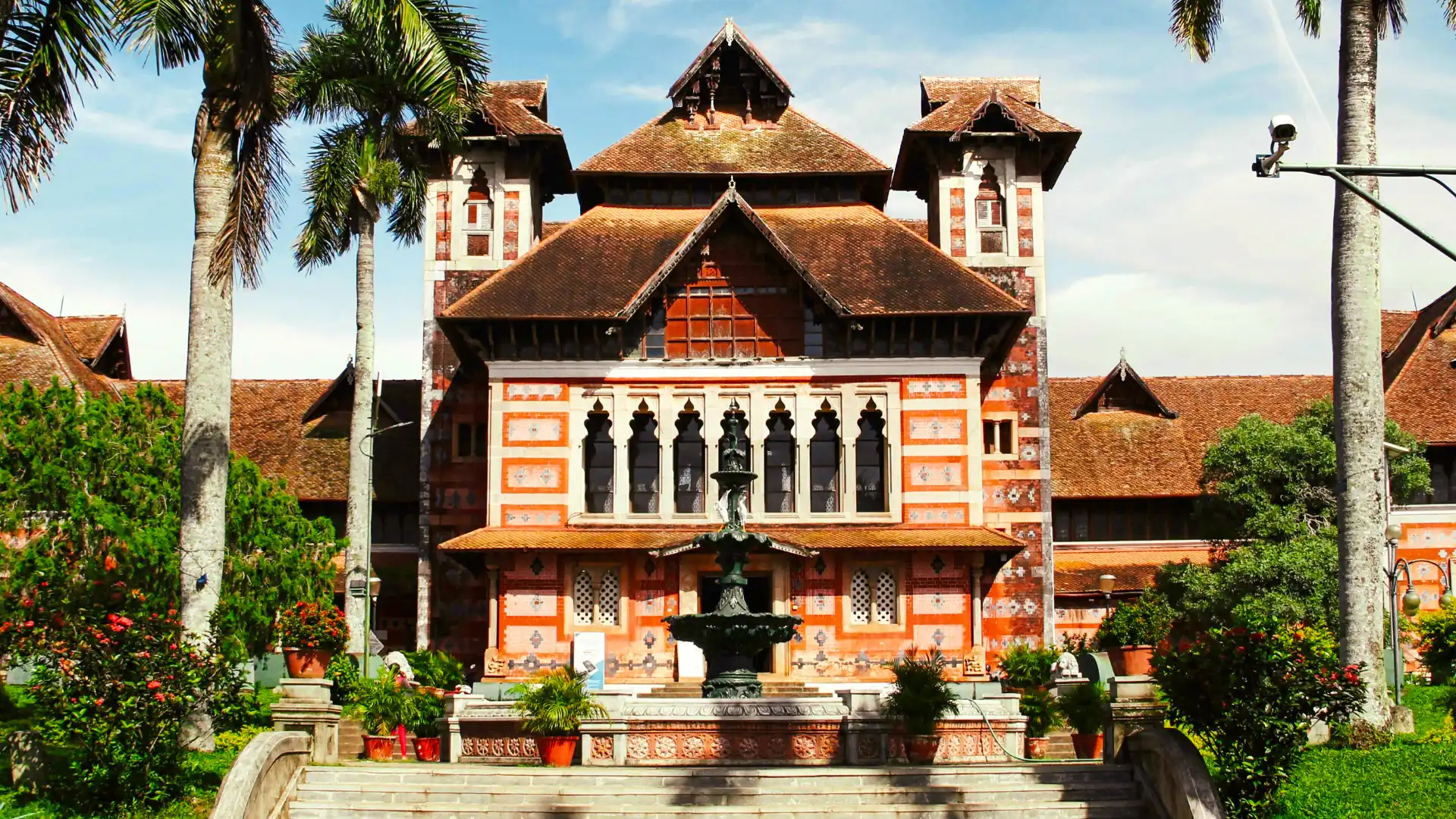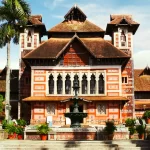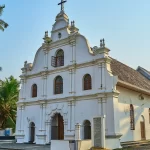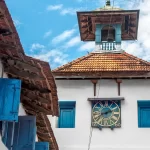Here are some key points about visiting the Napier Museum:
- Located in Thiruvananthapuram, Kerala, near the Zoological Park.
- Renowned for its unique Indo-Saracenic architectural style.
- Houses rare collections of bronze idols, ancient ornaments, and historic artifacts.
- Features traditional Kerala and Mughal design influences.
- Surrounded by a beautifully landscaped garden.
- Open to visitors on most days, with nominal entry fees.
- Photography may be restricted inside certain sections.
- Offers insights into Kerala’s rich cultural and artistic heritage.
The Napier Museum, located in the heart of Thiruvananthapuram (Trivandrum), Kerala, is one of India’s finest art and natural history museums. Named after Lord Napier, the former Governor of Madras, the museum is a vibrant repository of Kerala’s rich artistic heritage, showcasing a diverse collection of artifacts, sculptures, and historical items that offer a fascinating glimpse into the region’s past. Its striking architecture, set amidst a lush, green landscape, makes it not just a museum but a landmark that reflects the cultural splendor of Kerala.
A Glimpse into the Past
Established in 1855 and later expanded in 1874, the Napier Museum was designed by the British architect Robert Chisholm, who combined elements of Indo-Saracenic, Gothic, Mughal, and Kerala styles to create a unique and visually stunning structure. The museum’s architecture itself is a work of art, featuring intricate woodwork, gabled roofs, stained glass windows, and minarets, making it a perfect fusion of tradition and modernity. The use of natural ventilation techniques, including high ceilings and strategically placed windows, ensures that the interiors remain cool, offering a comfortable viewing experience.
The museum was named in honor of Lord Napier, who served as the Governor of Madras from 1866 to 1872, and played a significant role in the development of the city. Over the years, the museum has grown to become a cultural hub, attracting visitors with its eclectic collection that spans several centuries and regions.
Collections and Exhibits
The Napier Museum houses a vast collection of artifacts that provide insight into Kerala’s cultural and historical legacy. Its exhibits include a wide array of ancient bronze idols, stone sculptures, traditional Kerala ornaments, temple chariots, ivory carvings, and tribal artifacts. The museum’s collection of bronze idols and temple sculptures from South India, dating back to the 8th and 18th centuries, is particularly noteworthy. These sculptures depict various Hindu gods and goddesses, showcasing the craftsmanship and religious devotion of the time.
One of the museum’s highlights is the collection of ancient musical instruments, which offers a glimpse into the musical heritage of the region. Instruments such as the Veena, Mridangam, and Idakka are displayed with descriptions that explain their historical and cultural significance. The museum also has a rare collection of Buddhist artifacts and ancient coins from the region, offering a window into the trade and cultural exchanges that influenced Kerala’s history.
The Napier Museum is also known for its display of historical weapons, including swords, spears, and shields, many of which were used in Kerala’s past battles. These exhibits provide a deeper understanding of the region’s martial traditions and the evolution of warfare over the centuries.
The Natural History Museum
Adjacent to the Napier Museum is the Natural History Museum, which complements the cultural exhibits with a focus on Kerala’s biodiversity. This section of the museum includes a variety of taxidermy specimens, including preserved animals, birds, reptiles, and insects. Educational and informative, the exhibits in the Natural History Museum highlight the rich wildlife of the Western Ghats and offer insights into the region’s ecological significance.
Visiting the Museum
The Napier Museum is situated within the sprawling Museum Complex in Trivandrum, which also houses the Zoological Garden, one of the oldest zoos in India, and the Sri Chitra Art Gallery, featuring works by renowned Indian artists such as Raja Ravi Varma. The complex is surrounded by beautifully landscaped gardens, making it a serene and picturesque location that offers a blend of culture, art, and nature.
The museum is open to the public from Tuesday to Sunday, with specific hours of operation. It remains closed on Mondays and public holidays, so visitors should plan their visit accordingly. Nominal entry fees are charged, with discounts for children and groups.
Visitors are advised to take their time exploring the exhibits, as the museum offers an enriching experience that spans various aspects of Kerala’s history, art, and natural heritage. Photography inside the museum is restricted, so it’s best to carry memories in the form of personal reflections and learnings from the visit.
Bottom Line
The Napier Museum stands as a testament to Kerala’s rich cultural tapestry, offering a captivating journey through the state’s artistic and historical landscape. With its eclectic mix of exhibits, stunning architecture, and serene surroundings, the museum provides a holistic experience that appeals to history buffs, art lovers, and casual visitors alike. A visit to the Napier Museum is not just a step back in time, but also an exploration of the diverse influences that have shaped Kerala’s identity over the centuries. Whether you are a local resident or a tourist exploring Trivandrum, the Napier Museum is a cultural gem that should not be missed.



















